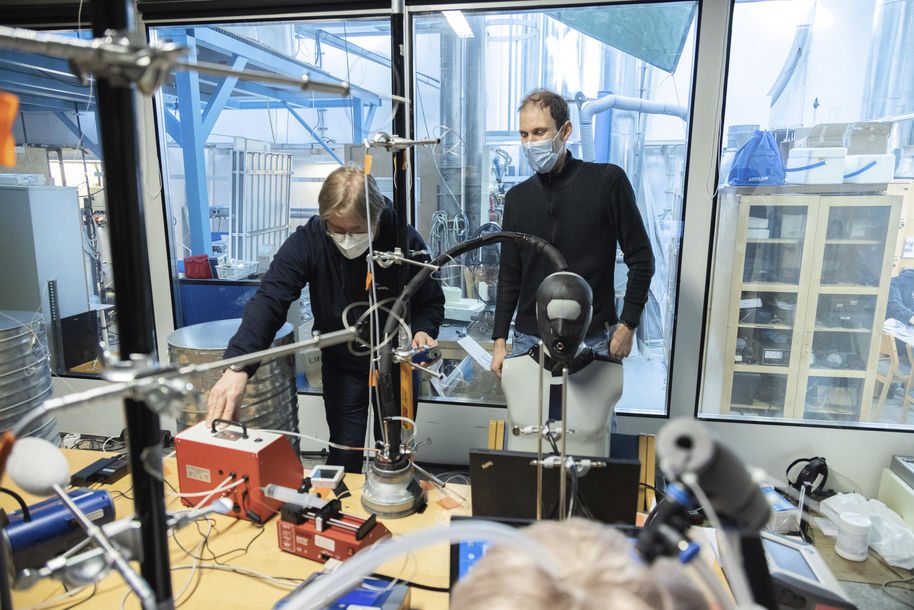Viruses in the air? Researchers study how air cleaning devices, masks, and UV light reduce risk of infection

Hand hygiene and coughing into sleeves are not sufficient measures against viruses such as the coronavirus, which are spread by aerosol particles suspended in the air.
For this reason, researchers at Aalto University and the University of Eastern Finland are studying how various solutions, such as more effective air diffusion and air cleaning devices, protective masks, and ultraviolet light, might reduce infection risk. The two-year research project is funded by the Finnish Work Environment Fund.
“We are looking for solutions that can be implemented easily and for detailed information on their effectiveness in reducing the risk of airborne infection”, explains Aalto University Professor Risto Kosonen, the head of the project.
The researchers conduct measurements in the laboratory by using threefold methods: aerosol particles made of paraffin, the MS2 virus, which is harmless for humans, and a gas containing a tracer. With the tracer gas, researchers also study how air diffusion and sources of heat gain affect the performance of ventilation.

Unique measurements
To ensure that the indoor air flows and measurements for aerosols and viruses are as accurate as possible, the researchers are using a special coughing machine as well as a human-sized breathing thermal manikin.
The coughing machine models the spread of aerosols through breathing and coughing. In addition, a simulated face with the upper body part of a heated dummy has been integrated for the coughing machine, and a mask can be put on it. The thermal manikin is the size and shape of a human. External “lungs” have been connected to the manikin, which help it inhale and exhale with the desired cycle and force through the mouth or nose. A mask can also be placed on the manikin. The manikin also has 25 body parts with adjustable temperature.
“We breathe air that rises from the heat of our own bodies. For that reason, it is important that the manikin should also be warm to allow us to reliably measure the content of the air that it inhales”, Kosonen says.

In addition to surgical masks and FFP2 masks, the researchers are measuring how partion walls, air diffusion, and air cleadin devices can affect the spread and content of gases, aerosols, and viruses. They are also testing the effectiveness of UV light in destroying viruses.
According to Kosonen, indoor air is often spoken of as if it were the same quality in the entire room volume. In reality, ventilation, the number of people, partion walls of different types, and even the surface temperature of windows can have a great effect on the particle content that forms in spatial and temporal difference in an indoor space.
“Many of our measurements are of a type that have hardly ever been made anywhere else”, Kosonen says.
Read more news

Unite! Seed Fund 2026: Call opens on 20 January 2026
Gain an early overview of the Unite! Seed Fund Call of Spring 2026. The call includes three funding lines: Student Activities, Teaching and Learning, and Research and PhD.
Deepika Yadav leverages technology to improve women's health
Deepika Yadav recently began as an assistant professor at the Department of Computer Science in the field of human-computer interaction (HCI) and interaction design for health and wellbeing.
Study: Internal combustion engine can achieve zero-emission combustion and double efficiency
A new combustion concept that utilizes argon could completely eliminate nitrogen oxide emissions from internal combustion engines and double their efficiency compared to diesel engines.






